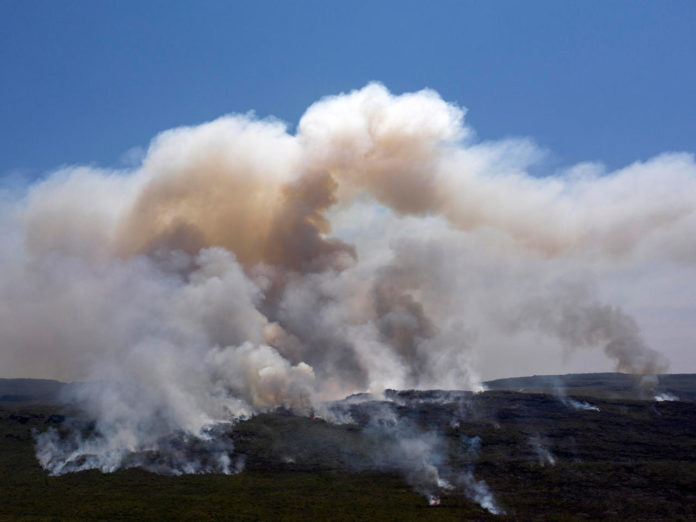PARIS, Feb 26, 2021 (BSS/AFP) – Stronger and more frequent wild fires are
reducing forests’ ability to store carbon in a trend that will likely not be
offset by planting new trees, a study said Thursday.
As Earth continues to heat due to ever higher concentrations of greenhouse
gases in its atmosphere, both the number of fires, as well as how fiercely
and long they burn, increases.
Slower growing tree species are better at surviving such intense blazes,
but they capture less atmospheric carbon and reduce nutrient availability,
according to research led by the University of Cambridge.
Analysing decades of data on the impact of fires on ecosystems across the
world, the team of experts found that repeated fires were driving long-term
changes in forest composition, while reducing their population size.
They found that after 50 years, regions with the most extreme annual fires
had 72 percent less biomass than regions that had not burned.
Writing in the journal Nature Ecology and Evolution, the researchers said
there were 63 percent fewer trees in hard-hit regions compared to areas
untouched by fires.
Because not all areas are suitable for mass reforestation, and because the
long-term impact of fires take decades to gauge, the team said simply
replanting the trees would likely fail to offset the reduction in forests’
capacity to absorb carbon from the atmosphere.
“Planting trees in areas where trees grow rapidly is widely promoted as a
way to mitigate climate change,” said Adam Pellegrini in the University of
Cambridge’s Department of Plant Sciences.
“But to be sustainable, plans must consider the possibility of changes in
fire frequency and intensity over the longer term.”
– Sink almost full –
Wildfires themselves are a major source of planet-warming carbon pollution,
with annual blazes releasing CO2 equivalent to around a fifth of fossil fuel
emissions.
But they also reduce nature’s capacity to absorb the carbon pumped into the
atmosphere.
Previous research has shown that frequent fires reduce the levels of soil
nutrients such as nitrogen.
Thursday’s study showed that this favours slower growing tree species that
have adapted to surviving with fewer nutrients.
These species limit the forest’s ability to recover as they hold on to
nutrients rather than replenishing the soil as they grow.
Throughout human history, forests have maintained the ability to suck
carbon from the atmosphere, proving a key line of defence against climate
change.
But with relentless emissions growth, they are losing their capacity to do
so.
One study from last year suggested that major forests such as the Amazon
may soon tip over from being a carbon sink — i.e. they absorb more carbon
than they release — to a source, perhaps within 15 years.
“As fire frequency and intensity increases because of climate change, the
structure and functioning of forest ecosystems are going to change in so many
ways because of changes in tree composition,” said Pellegrini.



